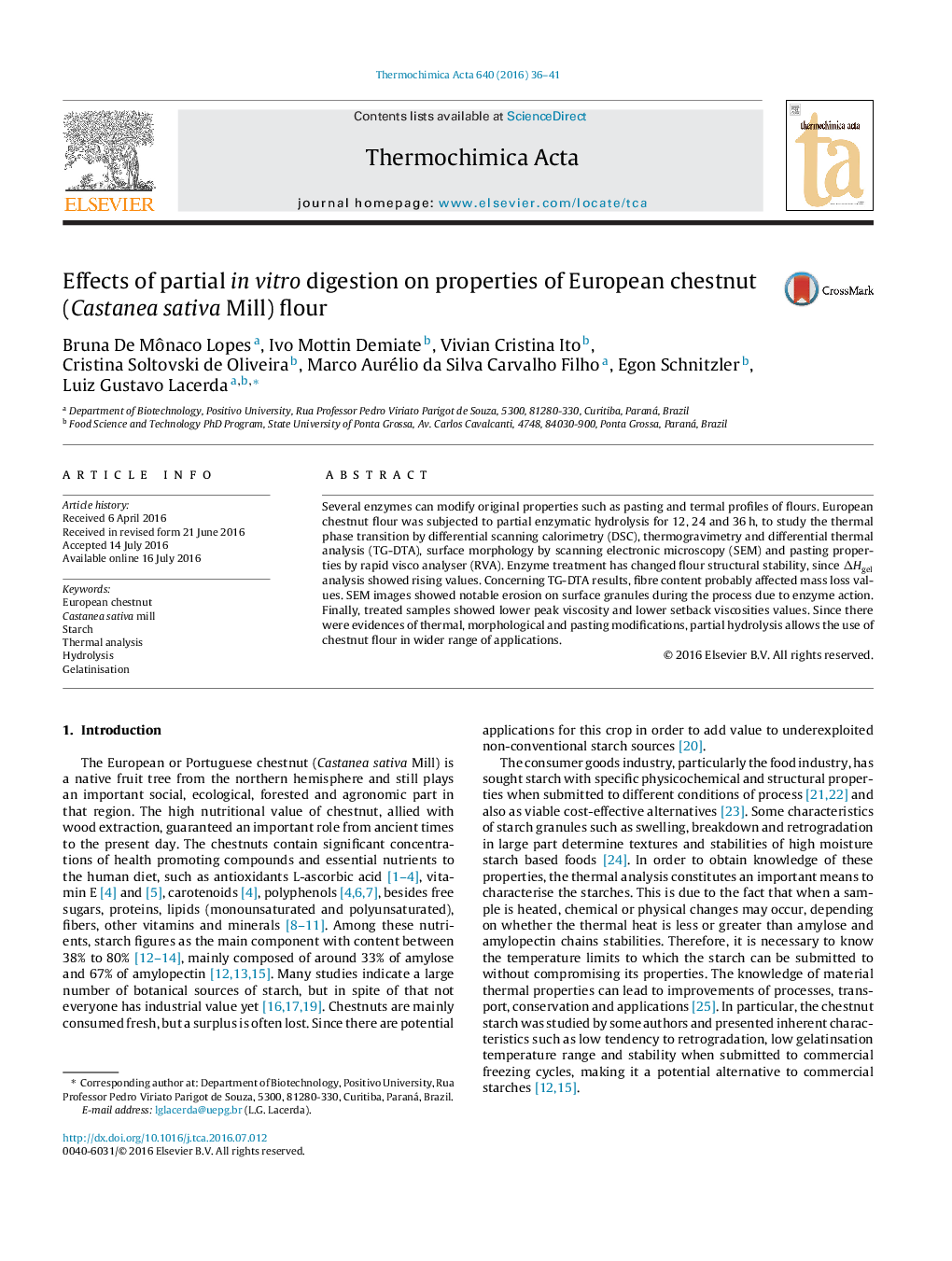| کد مقاله | کد نشریه | سال انتشار | مقاله انگلیسی | نسخه تمام متن |
|---|---|---|---|---|
| 672640 | 1459446 | 2016 | 6 صفحه PDF | دانلود رایگان |
• Enzyme treatment was performed on European chestnut flour.
• Enthalphy values for gelatinisation increased from 4.85 to 7.82 J g−1.
• Treatment and fibre content changed mass loss values.
• Partial hydrolysis caused reduction in peak and setback viscosities.
Several enzymes can modify original properties such as pasting and termal profiles of flours. European chestnut flour was subjected to partial enzymatic hydrolysis for 12, 24 and 36 h, to study the thermal phase transition by differential scanning calorimetry (DSC), thermogravimetry and differential thermal analysis (TG-DTA), surface morphology by scanning electronic microscopy (SEM) and pasting properties by rapid visco analyser (RVA). Enzyme treatment has changed flour structural stability, since ΔHgel analysis showed rising values. Concerning TG-DTA results, fibre content probably affected mass loss values. SEM images showed notable erosion on surface granules during the process due to enzyme action. Finally, treated samples showed lower peak viscosity and lower setback viscosities values. Since there were evidences of thermal, morphological and pasting modifications, partial hydrolysis allows the use of chestnut flour in wider range of applications.
Journal: Thermochimica Acta - Volume 640, 20 September 2016, Pages 36–41
